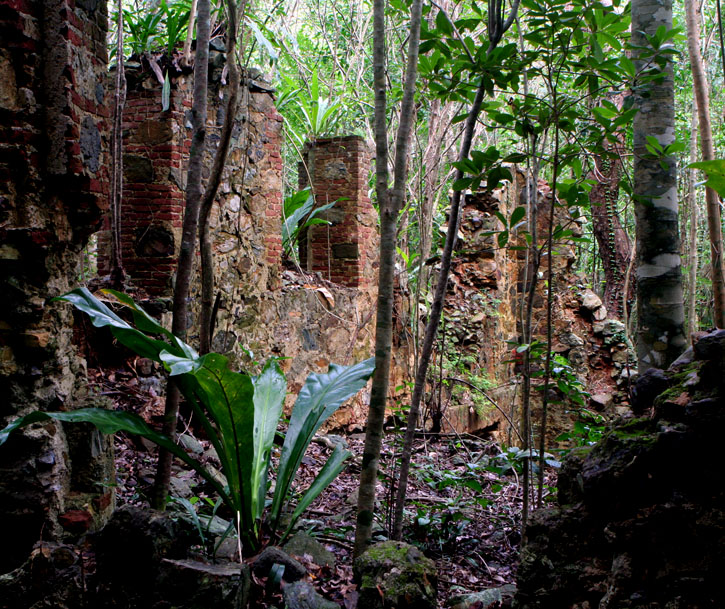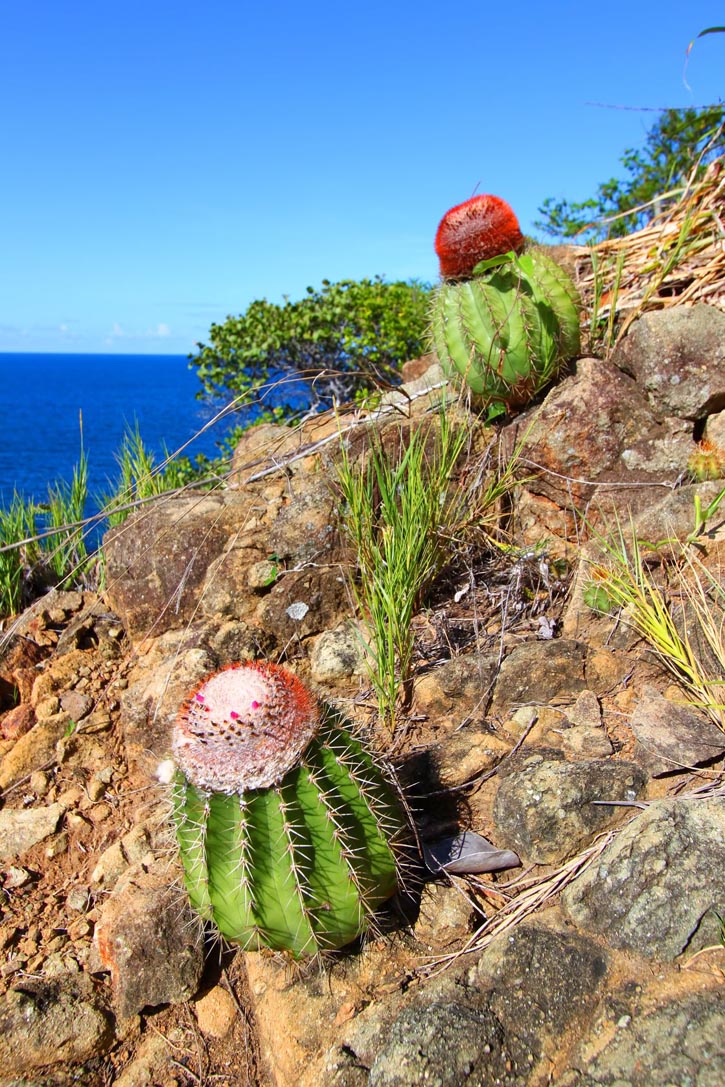Forests and Parks in the Virgin Islands
TIME : 2016/2/16 14:50:44
Away from the water, the Virgin Islands are a fascinating and richly diverse landscape: rocky bluffs and wide plains; mountain peaks and dry seaside forests; salt ponds and rainforest. Within these habitats dwell yellow-breasted bananaquits and menacing chicken hawks, handsome white-tailed deer and alien-looking iguanas, as well as a mind-boggling array of life-forms uniquely adapted to the tropical climate: ancient trees, knobby cacti, fast-growing fungi. Pack a pair of walking shoes, a water bottle, and a sense of adventure to get up close to the natural world away from the ocean.

The ruins of the Josie Gut plantation, along the Reef Bay Trail in Virgin Islands National Park, St. John. Photo © anoldent, licensed Creative Commons Attribution Share-Alike.
U.S. Virgin Islands
- Virgin Islands National Park, St. John: Covering almost three-quarters of St. John, no natural area is more diverse or important than Virgin Islands National Park. The Reef Bay Trail cuts through moist and dry tropical forests before arriving at the Reef Bay ruins, now a habitat for native bats. Bird-watchers will enjoy an outing to Francis Bay, where a salt pond attracts local and migratory birds. Hike L’Esperance Trail to find the only known baobab tree on St. John. The scent of bay rum colors the air at Cinnamon Bay, a moist forest where you will see numerous specimens of the Virgin Islands’ only native palm tree.
- Buck Island, St. Croix: The hike to the top of Buck Island treats visitors to exquisite views of the reef below and tracks through a dry tropical forest where naturalists have catalogued more than 180 native plant species.
- St. George Village Botanical Garden, St. Croix: Stroll the lovingly maintained trails at this expansive garden built around the ruins of an old plantation. View showy tropical flowers, local fruit trees, a cactus garden, and medicinal herbs.
- Hassel Island, St. Thomas: Hike from end-to-end of this undeveloped island sitting in the mouth of Charlotte Amalie Harbor, and treat yourself to beautiful views along the way.
British Virgin Islands
- Sage Mountain National Park, Tortola: The highest peak in the Virgin Islands, Sage Mountain is home to old-growth forest untouched since the time of Columbus. Hike past giant elephant ears, magnificent mahoganies, tree ferns, and air-dwelling bromeliads.
- Shark Bay National Park, Tortola: Look for bats in the bat cave and hike through a boulder-strewn landscape. Keep your eyes open for colorful butterflies and bananaquits, attracted to the fruit of the pipe organ cactus.

Cacti along the coastline of Shark Bay National Park on the island of Tortola, British Virgin Islands. Photo © Jason Ross/123rf.
- Gorda Peak National Park, Virgin Gorda: The park at the top of Virgin Gorda is home to the smallest lizard in the world; you may not spot one, but you’re sure to see dozens of hermit crabs shuffling around the undergrowth of this lush forest.
- Sandy Cay, Jost Van Dyke: This tiny island has it all: dry tropical forest, rocky bluffs, a small salt pond, and a sandy beach. A nature trail circles the island and takes you on a whirlwind tour of Virgin Islands ecosystems.
- Anegada Outback: The wilds of Anegada are unlike any other place in the Virgin Islands. A mysterious landscape of frangipani trees, century plants, and wild orchids, the dry scrubby bush that blankets the island is at first glance uninviting—but venture in and you will be delighted.
Excerpted from the Sixth Edition of Moon U.S. & British Virgin Islands.

